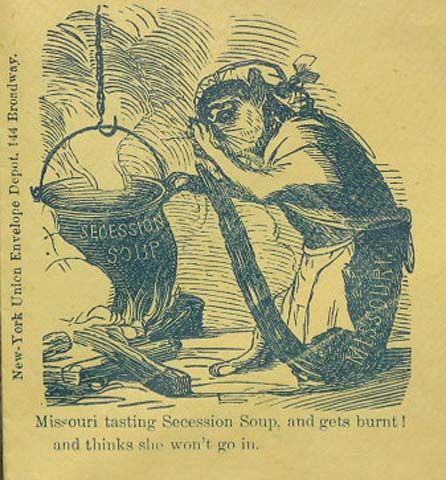Looks like I got Yellow Card over at CI… ![]() / Anyway, I found this and thought I would share it.
/ Anyway, I found this and thought I would share it.

After the secession of Southern states began, the Missouri legislature called for the election of its own special convention on secession. The convention voted decisively to remain within the Union, but pro-Southern Governor Claiborne F. Jackson ordered the mobilization of several hundred members of the state militia who had gathered in a camp in St. Louis for training. Union General Nathaniel Lyon struck first, encircling the peaceful camp and forcing the state troops to surrender. Lyon then directed his soldiers, largely non-English-speaking German immigrants, marched the prisoners through the streets then opened fire on the largely hostile crowds of civilians who gathered around them, killing unarmed prisoners as well as men, women and children of St. Louis in an incident that became known as the “St. Louis Massacre.”
These events caused greater Confederate support within the state. Governor Jackson appointed Sterling Price, president of the convention on secession, as head of the new Missouri State Guard. Jackson and Price were forced to flee the state capital of Jefferson City on June 14, 1861, in the face of Lyon’s rapid advance against the state government. In the town of Neosho, Missouri, Jackson called the state legislature into session where they enacted a secession ordinance that was recognized by the Confederacy on October 30, 1861. With the elected governor absent from his capital and the legislators largely dispersed, Union forces installed an unelected pro-Union provisional government with Hamilton Gamble as provisional governor. President Lincoln’s Administration immediately recognized Gamble’s government as the legal government, which provided both pro-Union militia forces for service within the state and volunteer regiments for the Union Army.
Fighting ensued between Union forces and a combined army of General Price’s Missouri State Guard and Confederate troops from Arkansas and Texas under General Ben McCulloch. After winning victories at the battle of Wilson’s Creek and the siege of Lexington, Missouri, the Confederate forces had little choice but to retreat to Arkansas and later Marshall, Texas, in the face of a largely reinforced Union Army. Though regular Confederate troops staged large-scale raids into Missouri, the fighting in the state for the next three years consisted mainly of guerrilla warfare conducted by citizen soldiers such as Colonel William Quantrill, Frank and Jesse James, the Younger brothers, and William T. Anderson. Such small unit tactics pioneered by the Missouri Partisan Rangers were also seen elsewhere in occupied portions of the Confederacy during and after the Civil War.
(Source: wikipedia.org)